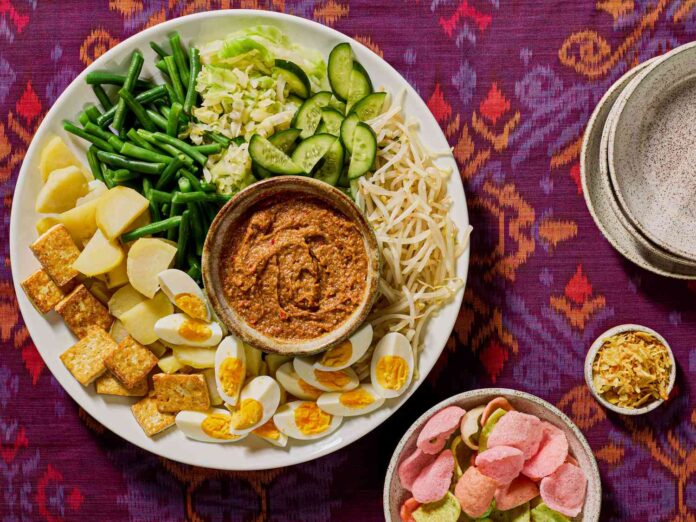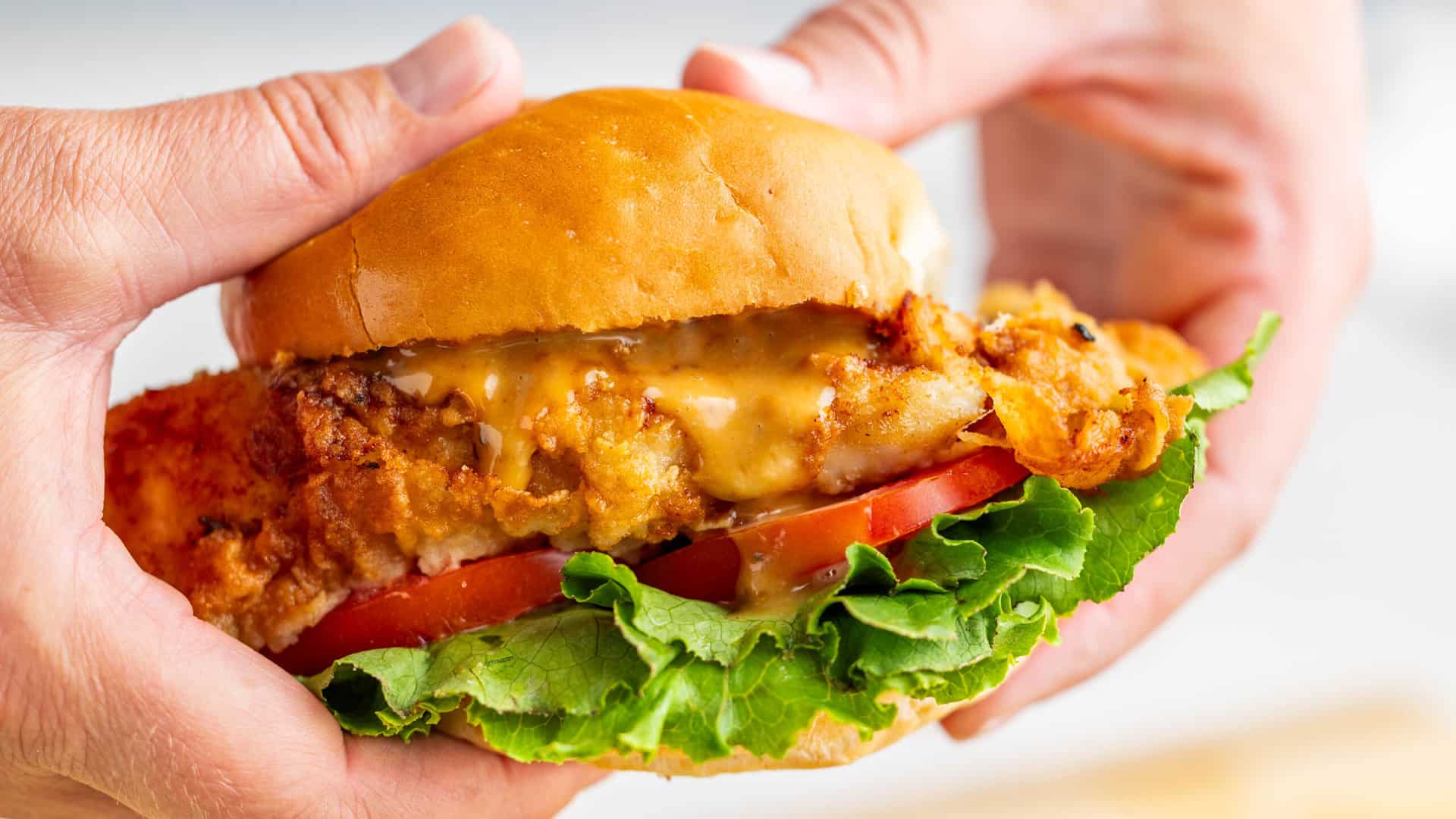
Why It Works
- Protein-packed hard-boiled eggs and tofu make gado gado satisfying sufficient for a whole meal.
- Blanching the greens helps them retain their contemporary shade, taste, and texture.
- Retaining the salad and sauce separate permits diners to combine and match elements as desired and prevents the greens from getting mushy.
Thought-about considered one of 5 nationwide dishes by the Indonesian authorities, gado gado is a cherished meal that road distributors, eating places, and residential cooks serve throughout the nation. The easy however hearty dish usually consists of blanched cabbage, mung bean sprouts, inexperienced beans, potatoes, contemporary cucumber, and lettuce, together with different accouterments like hard-cooked eggs and fried tofu or tempeh. There are not any onerous guidelines about what you possibly can and can’t embody—any seasonal vegetable is honest sport—and plenty of, together with myself, garnish the dish with fried shallots. Krupuk, Indonesian crackers produced from shrimp, tapioca, or the melinjo nut, typically accompany the dish.
Critical Eats / Melati Citrawireja
Many Indonesians consider that gado gado was created to mimic the salads Dutch colonizers ate. The phrase “gado” comes from “digado” and “menggado,” phrases within the Jakartan language Betawi that means “to eat with out rice.” Although that is technically true of the dish, many serve gado gado with steamed rice or lontong, compressed rice truffles historically wrapped and steamed in banana leaves.
All through Indonesia, there are various riffs on gado gado. Like gado gado, the next variations, which go by completely different names, pair contemporary greens with savory peanut sauce gussied up with aromatics and spices, resembling kencur (sand ginger), makrut lime leaves, and further garlic, amongst many different seasonings.
- Pecel: Inexperienced beans, cabbage, child spinach, and mung bean sprouts with steamed rice and peanut sauce.
- Karedok: Inexperienced beans, cabbage, cucumbers, mung bean sprouts, lemon basil and peanut sauce made with kencur and shrimp paste.
- Lothek: Inexperienced beans, cabbage, child spinach, mung bean sprouts, boiled eggs, fried tempeh, and peanut sauce.
- Ketroprak: Rice noodles with greens, tofu, and peanut sauce.
Gado gado is considered one of my mum’s go-to dishes for giant crowds, and it typically makes an look at dinner events. Simply earlier than serving, she’d toss all of the elements along with peanut sauce and convey the gado gado out on an enormous serving platter. Like my mum, I typically put together the dish for dinner events—however I want to maintain the elements and sauce separate to forestall the greens from getting too gentle.
What makes the salad such an awesome dish for gatherings can also be what makes it a beautiful weekday lunch or weeknight dinner: It’s easy, scrumptious, and comparatively simple to arrange upfront. All it’s a must to do is slice up a wide range of greens (blanching some and conserving others uncooked), boil some eggs, and whip up a wealthy peanut sauce to decorate all of it with. Paired with store-bought fried tofu, it’s a filling, vegetable-packed meal that takes half-hour to assemble—which helps clarify why it is such a well-liked recipe all through Indonesia’s houses, eating places, and road stalls.







